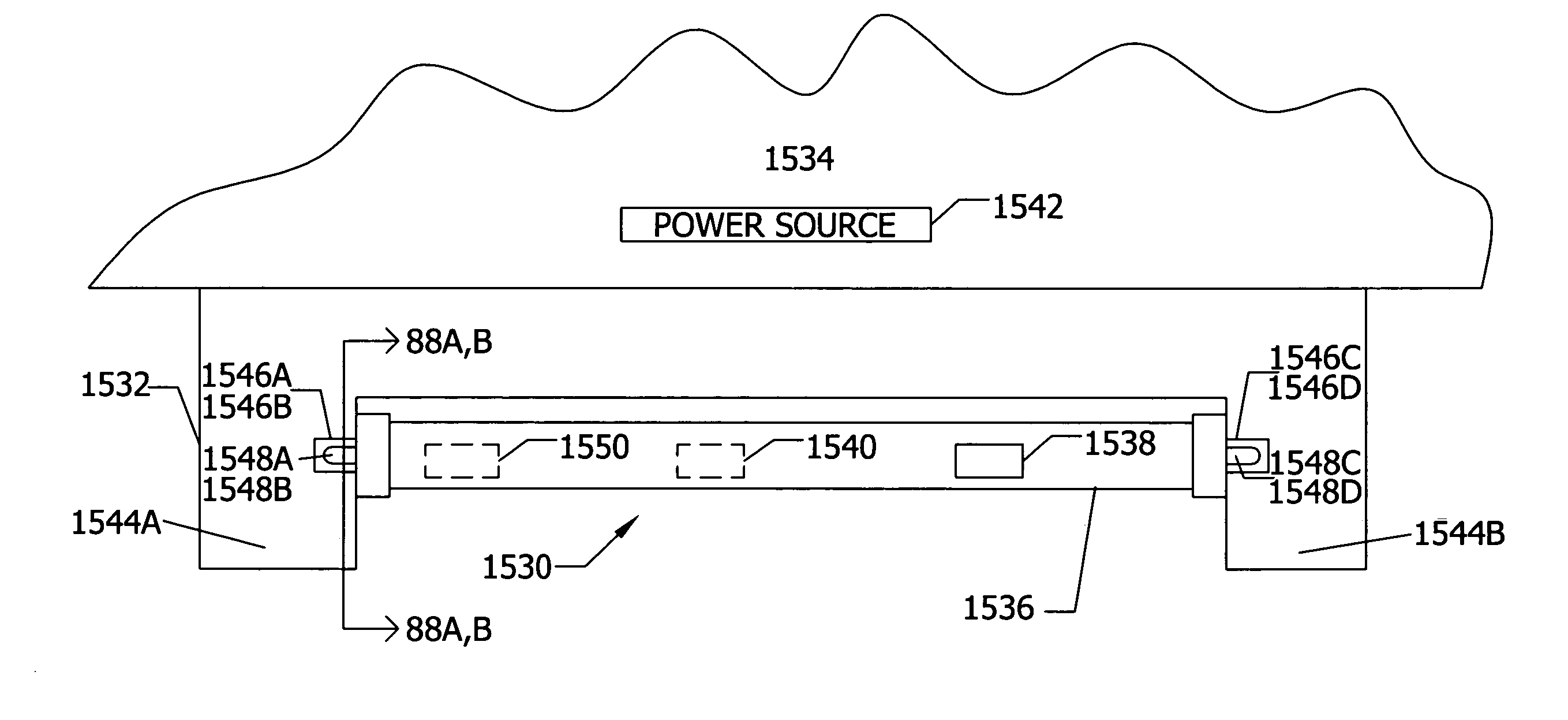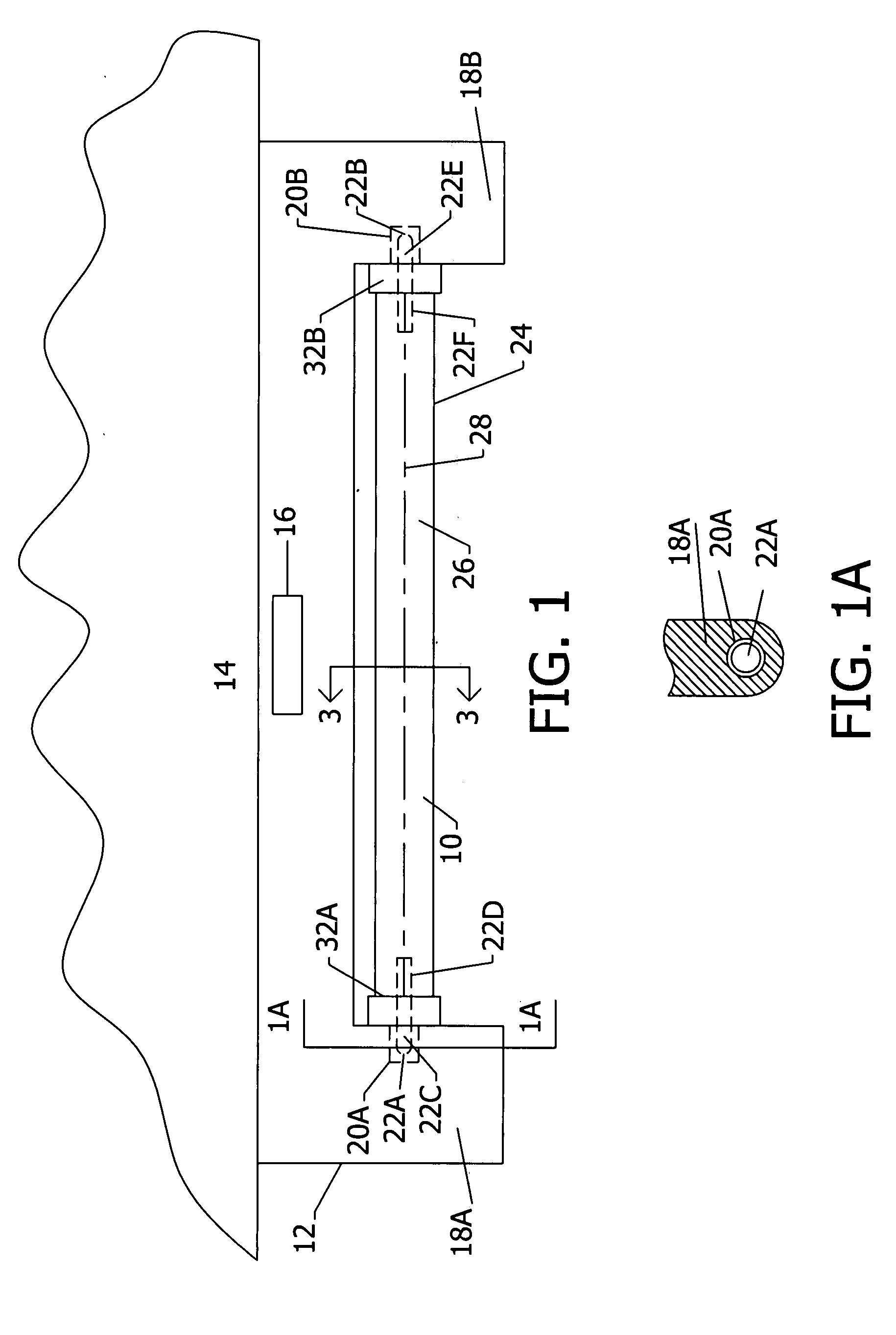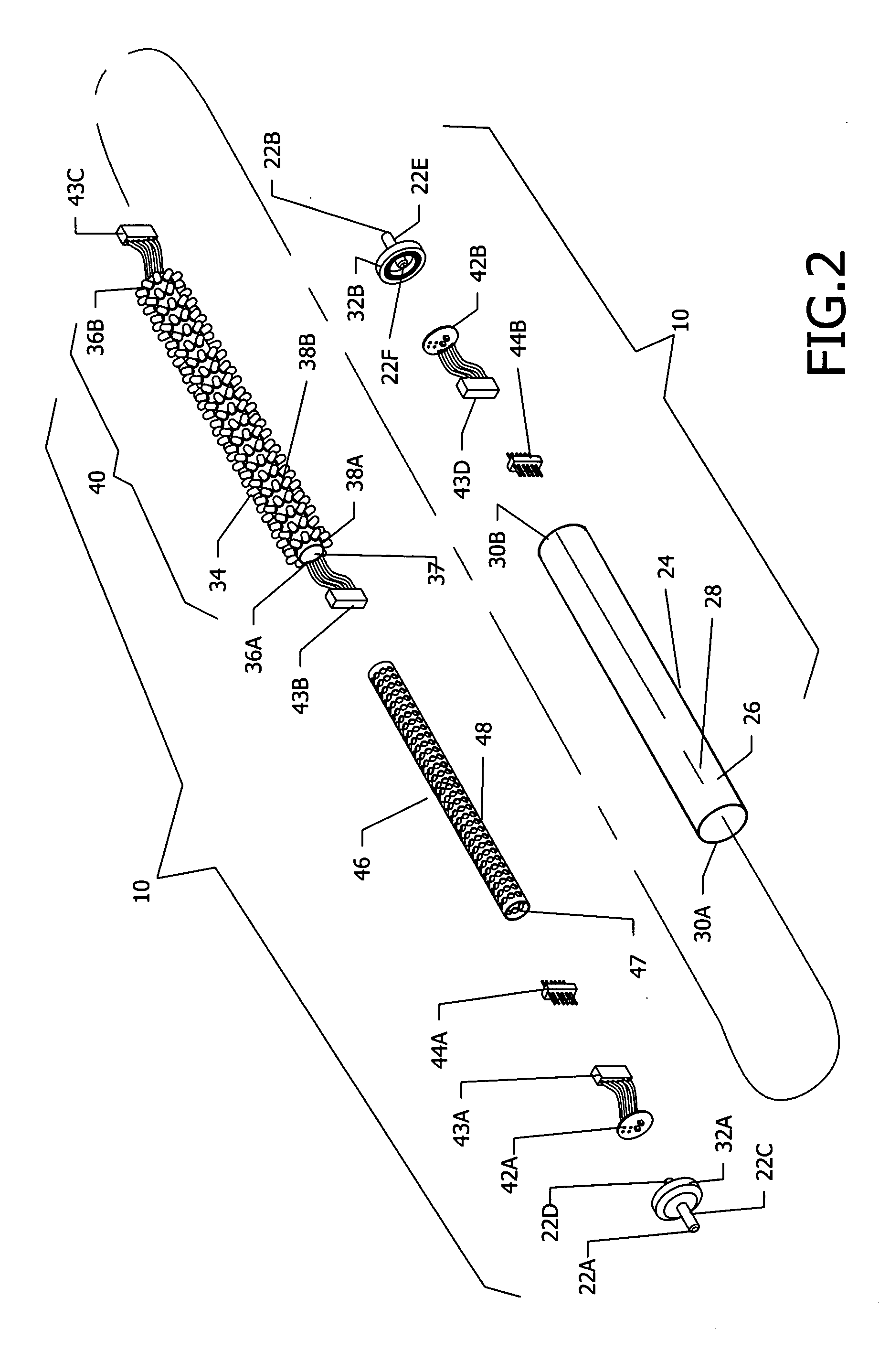Retrofit LED lamp for fluorescent fixtures without ballast
a technology of led lamps and fluorescent fixtures, which is applied in the field of retrofitting led lamps for fluorescent fixtures without ballast, can solve the problems of unreliable led lamps, unprotected led lamps, and high transient voltage spikes in any ac or dc system, and achieve the effects of increasing color, reducing labor costs, and increasing the number of colors
- Summary
- Abstract
- Description
- Claims
- Application Information
AI Technical Summary
Benefits of technology
Problems solved by technology
Method used
Image
Examples
Embodiment Construction
[0335] It is noted that the immediate following disclosure relates to continuation-in-part application Ser. No. 11 / 198,633, the parent application of the present application. The disclosure of the present child application begins with FIG. 87 and continues through to FIG. 97.
[0336] Reference is now made to the drawings and in particular to FIGS. 1-97 in which identical of similar parts are designated by the same reference numerals throughout.
[0337] An LED lamp 10 shown in FIGS. 1-10 is seen in FIG. 1 retrofitted to an existing elongated fluorescent fixture 12 mounted to a ceiling 14. An instant start type ballast assembly 16 is positioned within the upper portion of fixture 12. Fixture 12 further includes a pair of fixture mounting portions 18A and 18B extending downwardly from the ends of fixture 12 that include ballast electrical contacts shown as ballast end sockets 20A and 20B that are in electrical contact with ballast assembly 16. Fixture sockets 20A and 20B are each single ...
PUM
 Login to View More
Login to View More Abstract
Description
Claims
Application Information
 Login to View More
Login to View More - R&D
- Intellectual Property
- Life Sciences
- Materials
- Tech Scout
- Unparalleled Data Quality
- Higher Quality Content
- 60% Fewer Hallucinations
Browse by: Latest US Patents, China's latest patents, Technical Efficacy Thesaurus, Application Domain, Technology Topic, Popular Technical Reports.
© 2025 PatSnap. All rights reserved.Legal|Privacy policy|Modern Slavery Act Transparency Statement|Sitemap|About US| Contact US: help@patsnap.com



